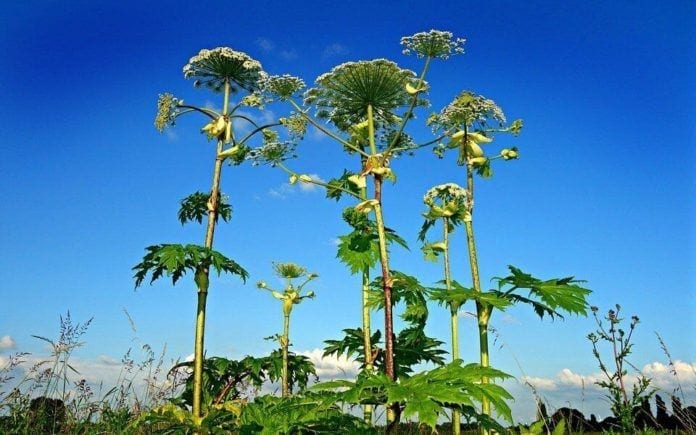The latest update for How to Spot Poisonous Plants is written by Lindsay Podolak.
New Jersey has plenty of great hiking and camping spots, but nothing can ruin an outdoor adventure like a bad rash. The key to avoiding plants that can irritate your skin is to know what you’re looking for. Here’s a guide on how to spot common poisonous plants when you’re in the woods.
Quick Click Guide: Select an option below to learn more about each type of poisonous plant.
| Poison Ivy | Poison Oak | Poison Sumac | Giant Hogweed |
Poison Ivy
The old saying for identifying poison ivy is: “leaves of three, let them be.” Poison ivy leaves always grow in groups of three. The leaves are the shape of teardrops with little divots all around them. The plant generally grows close to the ground but can grow up to six feet tall.
What to do if you touch it: A poison ivy rash will go away on its own within 2 or 3 weeks. To ease the itching, you can use an over-the-counter corticosteroid cream or a fragrance-free lotion, or both. Do not scratch the rash, as this can lead to infection.
Where it’s found: Poison ivy is common throughout all parts of New Jersey, except the Pine Barrens. Specific locations where it has been spotted include Watchung Reservation (Summit), High Point State Park (Sussex), Great Swamp (Chatham Township), Sandy Hook Unit (Middletown), Island Beach State Park (Seaside Park), Long Beach Island and Cape May.
Poison Oak
You can also identify Atlantic poison oak (the kind found on the East Coast) by “leaves of three.” The leaves are smooth around the edges, although they can have divots like poison ivy. The edges will never be evenly scalloped or spiny. Poison oak also grows close to the ground.
What to do if you touch it: Treatment for poison oak rash is the same as for poison ivy. Wait for the rash to go away on its own, and use lotion and corticosteroid cream to treat the itching.
Where it’s found: Atlantic poison oak grows best in dry, sandy soil and has been found mostly in the southern parts of the state, including Cape May.
Poison Sumac
Poison sumac is related to poison oak and poison ivy, but it is not as common. It usually only grows in wetlands. You may find small poison sumac trees close to the ground, or fully grown trees that are very tall. Poison sumac always has a red stem and multiple smooth, teardrop-shaped leaves growing in symmetrical pairs.
What to do if you touch it: As a matter of fact, treatment for a poison sumac rash is the same as for a poison ivy or poison oak rash.
Where it’s found: Poison sumac has a habitat range throughout the Garden State, but is most usually found in wooded, moist areas like bogs and swamps. Cape May, Ocean City and Somers Point are all locales where the plant is consistently found.
Giant Hogweed
This one is rare, but it’s important to know what it looks like because its sap can cause severe burns and blisters. In fact, touching your eyes after touching this plant could lead to blindness. There are reports of Giant Hogweed in New Jersey, New York, Pennsylvania and Virginia.
At the apex of the plant is a cluster of white flowers in an umbrella pattern, and the plant has thick, pointy leaves. The plant can grow up to 14 feet tall and the leaves can be 2 to 5 feet long; though you might find smaller ones closer to the ground.
Reporting a sighting of giant hogweed is critical, as local authorities will usually try to remove it.
What to do if you touch it: Wash off the sap with cold water and immediately get out of the sun, as the sap makes your skin extremely sensitive to UV light. Then, if your skin becomes irritated, get an aluminum acetate mixture from the pharmacy. Finally, soak a compress in the aluminum acetate and apply it to the affected area.
You don’t necessarily need to see a doctor, unless you have a severe skin reaction or the sap gets into your eyes.
Where it’s found: So far, in Mercer, Morris, Union and Warren counties. However, you can track new spots where the plant appears here.
Hero (Top) Feature Image: © leoleobobeo / Pixabay
Additional Images (in Order):
SWMNPoliSciProject / Wikimedia Commons
Leonard G. / Wikimedia Commons
Freekee / Wikimedia Commons
Mbdortmund / Wikimedia Commons
















